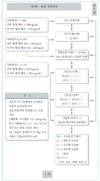Abstract
The rising incidence and prevalence of diabetes along with its complications have become a global concern. The necessity for a comprehensive model-targeting primary, secondary and tertiary prevention as well as all levels of care has become apparent. Staged Diabetes Management (SDM) was developed over a decade ago by the International Diabetes Centers, Minneapolis, Minnesota, U.S.A.. SDM was founded on the principle that a detailed understanding of the natural history of diabetes and the underlying defects responsible for the development of hyperglycemia and its associated complications should be the basis of sound clinical decision-making. It relies on clinical pathways to guide the clinicians though the detection, treatment and follow up of each type. Unique to SMD is that each pathway is customized for utilization in collaboration with local physicians and allied heath professionals. Thus far clinicians from 22 countries, using 11 translated versions of SDM, have participated in this process. In Korea, SDM was introduced in 1999 with the foundation of the committee in Korean Diabetes Association (KDA). Taking into account the regional difference in medical practice, resource allocation, availability of pharmacological agents and access to care, this Korean version of SDM was developed to reduce variation in practice, improve screening and detection, tighten glycemic control and to increase surveillance of complications. It has been noted that diabetes contributes to the cost of medical services. One way of reducing the financial burden is to find cost-effective approaches to prevention, detection and treatment of diabetes and its complications. The SDM model directly addresses this issue by seeking ways to optimize the limited resources available for diabetes care, prioritizing treatment, reducing medical error and expanding the role of allied health professionals. As SDM moves into the 21st century, its mission has expanded to encompass the principles of primary and secondary prevention.
References
1. The Diabetes Control and Complications Trial Research Group. The Effect of intensive treatment of diabetes on the development and progression of long-term complications in insulin-dependent diabetes mellitus. N Engl J Med. 1993. 329:977–986.
2. UK Prospective Diabetes Study(UKPDS) Group. Effect of in-tensive blood-glucose control with metformin on complications in overweight patients with diabetes(UKPDS 34). Lancet. 1998. 352:854–865.
4. Mazze RS, Bergenstal R, Ginsberg B. Intensified diabetes management: lessons from the diabetes control and complications trial. Int J Clin Pharmacol Ther. 1995. 33:43–51.
5. Mazze RS, Etzwiler DD, Strock E, Peterson K, McClave CR 2nd, Peterson A, et al. Staged diabetes management. Toward an integrated model of diabetes care. Diabetes Care. 1994. 17:Suppl 1. 56–66.
6. Mazze RS. Treatment of glucose intolerance in pregnancy: staged diabetes management. Int J Clin Pharmacol Ther Toxicol. 1993. 31:497–505.
7. Varroud-Vial M, Simon D, Attali J, Durand-Zaleski I, Bera L, Charpentier G, et al. Improving glycaemic control of patients with Type 2 diabetes in a primary care setting: a French application of the Staged Diabetes Management programme. Diabet Med. 2004. 21:592–598.

8. Horswell RL, Birke JA, Patout CA Jr. A staged management diabetes foot program versus standard care: a 1-year cost and utilization comparison in a state public hospital system. Arch Phys Med Rehabil. 2003. 84:1743–1746.

9. Hirsch IB, Goldberg HI, Ellsworth A, Evans TC, Herter CD, Cheadle AD, et al. A multifaceted intervention in support of diabetes treatment guidelines: a conttrial. Diabetes Res Clin Pract. 2002. 58:27–36.

10. Rith-Najarian S, Branchaud C, Beaulieu O, Gohdes D, Simonson G, Mazze R. Reducing lower-extremity amputations due to diabetes. Application of the staged diabetes management approach in a primary care setting. J Fam Pract. 1998. 47:127–132.




 PDF
PDF ePub
ePub Citation
Citation Print
Print




 XML Download
XML Download